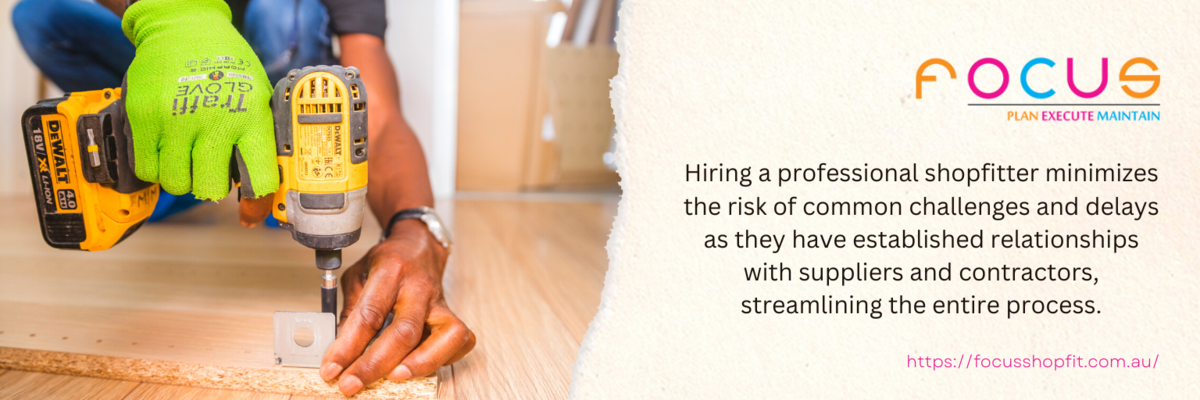Shopfitting plays a crucial role in creating an attractive and functional retail space. Whether it’s a new store or a renovation, a well-executed shop fitout can significantly impact customer experience and ultimately contribute to the success of a business. In Australia, the shopfitting industry is thriving, with professionals specializing in designing and constructing retail spaces that align with the brand’s vision and cater to the target market. However, one question that often arises is, “How long does a shop fitout truly take?”

What is a shop fitout and why is it important?
A shop fitout refers to the process of designing, planning, and constructing the interior of a retail store. It involves considering various elements such as layout, lighting, fixtures, signage, and overall aesthetics to create an inviting and functional space for customers. A well-designed shop fitout not only enhances the customer’s experience but also showcases the brand’s identity and products effectively. Businesses need to invest in a shop fitout as it can significantly influence customer behavior, increase sales, and create a positive brand image.
Factors that affect the duration of a shop fitout
Several factors can impact the duration of a shop fitout project in Australia. Firstly, the size and complexity of the store play a significant role. Larger stores or those with intricate designs may require more time for planning, construction, and installation of fixtures. Additionally, the availability of materials and equipment can affect the timeline. Delays in sourcing materials or equipment can result in project delays. The involvement of multiple contractors and tradespeople can also extend the duration of a shop fitout, as coordination between different parties may be required. Lastly, unforeseen challenges such as site restrictions, permit delays, or changes in design plans can also impact the overall timeline of a shop fitout project.
The shopfitting process: from planning to completion
A successful shop fitout project follows a systematic process, starting from the planning stage and ending with the completion of the construction. The first step is to establish the objectives and requirements of the store. This includes understanding the target market, brand identity, and desired customer experience. Once the objectives are clear, the design phase begins, where professionals create a layout, select materials, and plan the overall aesthetics. After design approval, the construction phase commences, involving the installation of fixtures, electrical work, painting, and other necessary construction tasks. Finally, the project is completed with final touches, such as signage installation and visual merchandising.

Tips for efficient shopfitting project management
Efficient project management is crucial for the timely completion of a shop fitout project. Here are some tips to ensure smooth progress:
- Clear communication: Maintain open and transparent communication channels with all stakeholders involved in the project, including contractors, suppliers, and the client.
- Detailed planning: Develop a comprehensive project plan that includes all tasks, timelines, and dependencies. Review and update the plan regularly with proper communication.
- Regular progress tracking: Monitor the progress of the project regularly, keeping a close eye on timelines, milestones, and any potential delays.
- Streamline decision-making: Establish clear decision-making processes to avoid unnecessary delays. Ensure that all parties involved are aware of their roles and responsibilities in making timely decisions.
- Collaborative approach: Foster a collaborative environment where all contractors and tradespeople work together seamlessly. Encourage regular communication and problem-solving.
Common challenges and delays in shopfitting projects
Despite careful planning and project management, shopfitting projects can face challenges and delays. Some common issues include:
- Permit delays: Obtaining necessary permits from local authorities can sometimes take longer than anticipated, leading to project delays.
- Changes in design plans: If there are any modifications or additions to the initial design plan, it can impact the timeline and require adjustments in construction.
- Unforeseen site restrictions: Discovering unexpected site restrictions or structural issues during the construction phase can lead to delays as additional work may be required to overcome these challenges.
- Material or equipment delays: Delays in the delivery of materials or equipment can halt the progress of the project. It is essential to have backup plans and alternative suppliers in case of such delays.
Hiring a professional shopfitting company in Australia
When embarking on a shop fitout project, it is recommended to hire a professional shopfitting company in Australia. These companies have the expertise, experience, and resources to manage shopfitting projects efficiently. They can provide valuable insights, and creative design solutions to ensure that the project stays on track and within the estimated timeframe. Hiring professionals also minimizes the risk of common challenges and delays as they have established relationships with suppliers and contractors, streamlining the entire process.

Factors to consider when estimating the duration of a shop fitout
Estimating the duration of a shop fitout involves considering various factors, including the size and complexity of the store, availability of materials and equipment, involvement of multiple contractors, and potential challenges or delays. On average, small to medium-sized retail stores can take 4 to 8 weeks, while larger and more intricate designs may require 8 to 12 weeks or more. Efficient project management, clear communication, and collaboration can help mitigate delays and ensure timely completion. By hiring a professional shopfitting company, businesses can benefit from their expertise and experience, resulting in a successful shop fitout that aligns with the brand’s vision and enhances the customer’s experience.
